O is ready to roll
The most global countdown ticks towards a zero. And, within a few hours, an O-shaped object is set to be kicked around by some fleet-footed magicians on the manicured greens of Russia. No less than 150 million pairs of eyes across the globe will stay glued, for sure, to this O with the sole expectation to be entertained and enthralled.
The long wait for the heart-stopper finally comes to an end tomorrow. It is time for World Cup football, when everything else takes a back seat. The O this time is Telstar, which will dictate the world's business from Putin's land for the next month.
There is a long debate about the origin of football. England is popularly credited with being the father of football. Leaving the debate to historians, we can proceed to the acknowledgement that the attraction to football runs in the genes of the human race. When we have a spherical object in front of us, our automatic instinct is to kick it! That is possibly why football has become the most global game.
Kicking a football around is not what a spectator waits up to see. Kicks that bring goals are what matter. Of course, it largely depends on the skills of a footballer. But in the age of technology, the football too has a say.
Fifa, the game's global governing body, had learnt a good lesson from the disappointment of the Jabulani, the ball used during the World Cup in South Africa in 2010. Jabulani means 'to celebrate', but it turned out to be a nightmare for strikers. Its 'grip n groove' feature was expected to provide players a ball with stable flight and grip under all conditions. But the complaints from the likes of Lionel Messi, Julio Cesar and Robinho meant the ball was blamed for the tournament's early goal drought. Uruguay's Diego Forlan -- who scored the goal of the tournament and netted five times on way to picking up the Golden Ball -- was perhaps the only exception. The Jabulani was eventually subjected to tests by NASA to figure out what was wrong with it!
>
Sports goods giant Adidas has kept on manufacturing the official football for the World Cup since the original Telstar for the Mexico event in 1970. Brazuca was born through state-of-the-art technology before it was used in the last World Cup in Brazil. The Brazuca turned out to be the most tested football ever in the history of the most beautiful game on earth. It swung the right way in Brazil to produce a goal-fest and helped Fifa earn over 4.3 billion dollars.
Basking in the success of Brazuca, Adidas is set to introduce yet another masterpiece. Telstar 2018 is the reinvention of the official football with which legends like Pele, Gerd Muller and Bobby Moore had captivated audiences of 1970. At that time the world entered the television era and Adidas named its football Telstar -- the star of television.
Almost half a century later the Telstar 2018 returns in a new package with new technology, having undergone rigorous testing. It is said to give a footballer control, power and shooting precision close to perfection. The ball is to fly faster, swing in the air and give the extra edge in soft-touch jugglery. And all these mean that the Telstar 2018 is set to become the darling of strikers and the enemy of goalkeepers.
Although they never participated in a World Cup, Pakistan has a big reason to cheer and be cheered. Maestros in Sialkot are the makers of the Telstar as well as the Brazuca.
Now, sit tight and wait to see who makes the most of the Telstar: Cristiano Ronaldo, Messi or Neymar? And, will it be Brazil or Argentina who are going to find the Telstar easiest to jive with? But you just cannot be sure. With Spain and Germany in good nick and other surprises sure to come to the fore, the month-long football festival will not be one to miss out on.
Football has certainly come a long way from its humble beginnings hundreds of years ago. It's hard to believe how the game has evolved, from a 'game of ball' to an all-consuming high-tech fiesta. Some believe the sport was first introduced in England as early as 1170 when some youths went to a field for a 'game of ball'. They, as different accounts say, used an inflated animal bladder to kick around.
Way back in the second and third century BC, military drills in China had a striking similarity to football. An exercise was called Tsu' Chu, in which opponents used a leather ball that was filled with feathers and hair. The aim was to get the ball into a small net fixed on to bamboo canes while also defending themselves from attacks.
However, the history of the game in the South Asian region is not clear. It is also not known whether Bangladeshis learnt the game from China or England. But there would be none to argue that most of our forefathers grew up kicking the pomelo around!
The writer is former Sports Editor of The Daily Star


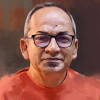









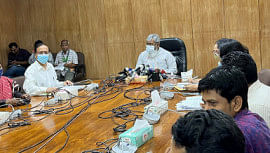

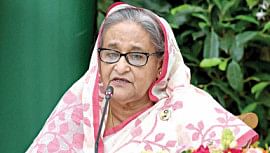








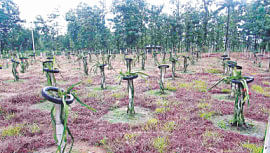

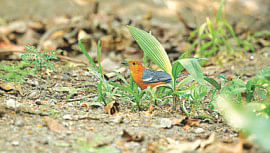

Comments